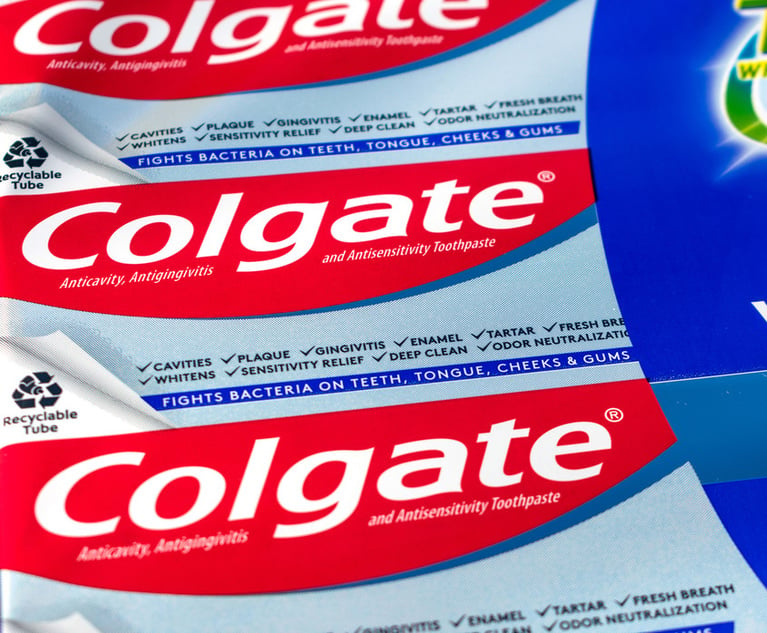Why Midsize Law Firms Are Built for 'Superior Branding'
"There's a great opportunity for mid-market firms to do superior branding," said Ross Fishman of Fishman Marketing. Midsize firms "can have stronger cultures, more defined cultures, because they aren't the product of countless mergers."
November 30, 2018 at 02:32 PM
6 minute read
 Credit: phloxii/Shutterstock.com
Credit: phloxii/Shutterstock.com
Editor's Note: This story is adapted from ALM's Mid-Market Report. For more business of law coverage exclusively geared toward midsize firms, sign up for a free trial subscription to ALM's new weekly newsletter, The Mid-Market Report.
“If it ain't broke, don't fix it” is surely not a phrase posted around the offices of many marketing firms, but for law firms—often longstanding institutions bound by tradition, professionalism, and prestige, and perhaps named for long-deceased dignitaries—it can be an unspoken way of life.
Even law firms, though, come to decide that it's time for a makeover. But what causes any firm to reach that realization seems to vary by case. A merger, a new website, a new managing partner, a new chief marketing officer, precipitous growth: any of these, and more, can spark a rebranding process.
Opening a new office prompted Hirschler Fleischer, an 80-lawyer firm based in Richmond, Virginia, to rethink its brand image and its public name. In January 2016, the firm opened an office in Tysons Corner, just outside the Washington, D.C., Beltway. While the firm and its principal founders were well-known in Richmond and Fredericksburg, they were new to Northern Virginia, said Courtney Paulk, president of the firm's board of directors.
About 18 months ago, Paulk said, the question of name recognition spurred a more intensive exploration into how the firm viewed itself and how people outside viewed it. The effort eventually led the firm to hire outside vendors to redevelop the firm's website from “just looking good” to telling the firm's story about how well it knows its clients and their businesses. The site launched recently, along with a new logo featuring a one-name firm: Hirschler. (Legally, the firm remains Hirschler Fleischer.)
The conclusion was that for a new market in Northern Virginia, “Hirschler Fleischer” was harder to pronounce and put on a logo than the single name.
“Rebranding can be a powerful tool for middle-market firms looking to compete with larger firms, who, logically, have greater brand awareness because of size and revenue,” Paulk said.
One marketing professional carried that line of thinking further, saying that midsize firms in many cases can better leverage marketing.
“There's a great opportunity for mid-market firms to do superior branding,” said Ross Fishman of Fishman Marketing, based near Chicago.
Midsize firms “can have stronger cultures, more defined cultures, because they aren't the product of countless mergers,” Fishman said. Firms that don't have lawyers spread across international markets need not concern themselves with a logo, pitch or appearance that might be seen as too bold or otherwise unattractive in certain cultures, he added.
Still, midsize and smaller firms can have more trouble getting the ball rolling because their principals might be more personally invested in the firm's name and identity, Fishman said. “The larger the size, the less of an issue it is, because it can be less personal.”
For Norris McLaughlin—named Norris, McLaughlin & Marcus prior to a rebranding process that ended earlier this year—change was necessitated by the legal market, and the management committee and chief marketing officer “decided it was time to take action.”
“The legal market has changed substantially since the last time we updated our look and feel over 10 years ago,” managing partner John Vanarthos said. “With that in mind and looking toward the future, we analyzed what our competitors are doing and the look and feel of their websites and approach to the market.”
It's more than just a name. The Bridgewater, New Jersey-based firm, Vanarthos said, “adopted a new strategic plan which covers many areas of law, business and markets,” in order to “position ourselves for the future and … to stand out and modernize our firm.”
With increasing competition for clients and talent, it's “essential that a law firm be able to stand apart from its peers not only from a look and messaging standpoint but [on] approach to the market,” Vanarthos said. “More importantly, we want our attorneys to deliver our brand—which is providing value to middle market and individual clients with a quality of service that is above their expectations—a quality of response that is faster than and more competent than they can come to expect anywhere else, at a competitive price point.”
For Halloran Sage, which in 2018 shed the ampersand that previously split its two names, rebranding began more from within, Mid-Market Report affiliate the Connecticut Law Tribune reported earlier this year.
In addition to the name tweak, the Hartford-based firm remade its website, including a short-format video with what firm leaders hope is clearer messaging to clients and prospective clients.
Chief Operative Officer David Urbanik said in the report that firm leaders “sort of made a decision to rebrand and modernize our brand, and in undertaking that process, we looked at ourselves internally and said 'Let's redefine our values.'”
Partner William McGrath explained: “I'm sort of indifferent to what other firms our size are doing. We're doing what works for us.”
He said the process from the beginning was “driven totally internally.”
“It was not a reaction to market forces or what other firms are doing,” McGrath said. “We didn't feel like we were broken in our desire to rebrand. We felt we should use this opportunity to affirm our values.”
According to Fishman, identifying a firm's values is a vital element in the rebranding process itself, but that sense of tradition, or perhaps pride, can make getting the process started the bigger leap. A firm's true name rarely needs to be changed, but the logo—which typically features only one or two of a firm's potentially many name partners—often does, he said. And the logo is sometimes enough to cause consternation if it means name partners on the “back half” of the logo are shaved off, he said—noting that the order of names is almost always based on simple chronology, and that can make trimming unfair to any “back half” partner who has had a big impact on the firm's success.
“No one messes with someone whose name is on the logo of their business card,” Fishman said. But rebranding is “not personal”; it's “purely a marketing issue.”
“Its not people or professionals; it's math,” Fishman said of names on a law firm logo. “We're counting syllables. These are words, not names.”
“In no case that I have ever seen does anyone, anywhere, use more than three names” when referring to a law firm in conversation, he said.
Jonathan Ringel and Michael Marciano contributed to this report.
This content has been archived. It is available through our partners, LexisNexis® and Bloomberg Law.
To view this content, please continue to their sites.
Not a Lexis Subscriber?
Subscribe Now
Not a Bloomberg Law Subscriber?
Subscribe Now
NOT FOR REPRINT
© 2025 ALM Global, LLC, All Rights Reserved. Request academic re-use from www.copyright.com. All other uses, submit a request to [email protected]. For more information visit Asset & Logo Licensing.
You Might Like
View All
How This Dark Horse Firm Became a Major Player in China

Colgate Faces Class Actions Over ‘Deceptive Marketing’ of Children’s Toothpaste

Internal Whistleblowing Surged Globally in 2024, So Why Were US Numbers Flat?
6 minute read
Trending Stories
- 1New York-Based Skadden Team Joins White & Case Group in Mexico City for Citigroup Demerger
- 2No Two Wildfires Alike: Lawyers Take Different Legal Strategies in California
- 3Poop-Themed Dog Toy OK as Parody, but Still Tarnished Jack Daniel’s Brand, Court Says
- 4Meet the New President of NY's Association of Trial Court Jurists
- 5Lawyers' Phones Are Ringing: What Should Employers Do If ICE Raids Their Business?
Who Got The Work
J. Brugh Lower of Gibbons has entered an appearance for industrial equipment supplier Devco Corporation in a pending trademark infringement lawsuit. The suit, accusing the defendant of selling knock-off Graco products, was filed Dec. 18 in New Jersey District Court by Rivkin Radler on behalf of Graco Inc. and Graco Minnesota. The case, assigned to U.S. District Judge Zahid N. Quraishi, is 3:24-cv-11294, Graco Inc. et al v. Devco Corporation.
Who Got The Work
Rebecca Maller-Stein and Kent A. Yalowitz of Arnold & Porter Kaye Scholer have entered their appearances for Hanaco Venture Capital and its executives, Lior Prosor and David Frankel, in a pending securities lawsuit. The action, filed on Dec. 24 in New York Southern District Court by Zell, Aron & Co. on behalf of Goldeneye Advisors, accuses the defendants of negligently and fraudulently managing the plaintiff's $1 million investment. The case, assigned to U.S. District Judge Vernon S. Broderick, is 1:24-cv-09918, Goldeneye Advisors, LLC v. Hanaco Venture Capital, Ltd. et al.
Who Got The Work
Attorneys from A&O Shearman has stepped in as defense counsel for Toronto-Dominion Bank and other defendants in a pending securities class action. The suit, filed Dec. 11 in New York Southern District Court by Bleichmar Fonti & Auld, accuses the defendants of concealing the bank's 'pervasive' deficiencies in regards to its compliance with the Bank Secrecy Act and the quality of its anti-money laundering controls. The case, assigned to U.S. District Judge Arun Subramanian, is 1:24-cv-09445, Gonzalez v. The Toronto-Dominion Bank et al.
Who Got The Work
Crown Castle International, a Pennsylvania company providing shared communications infrastructure, has turned to Luke D. Wolf of Gordon Rees Scully Mansukhani to fend off a pending breach-of-contract lawsuit. The court action, filed Nov. 25 in Michigan Eastern District Court by Hooper Hathaway PC on behalf of The Town Residences LLC, accuses Crown Castle of failing to transfer approximately $30,000 in utility payments from T-Mobile in breach of a roof-top lease and assignment agreement. The case, assigned to U.S. District Judge Susan K. Declercq, is 2:24-cv-13131, The Town Residences LLC v. T-Mobile US, Inc. et al.
Who Got The Work
Wilfred P. Coronato and Daniel M. Schwartz of McCarter & English have stepped in as defense counsel to Electrolux Home Products Inc. in a pending product liability lawsuit. The court action, filed Nov. 26 in New York Eastern District Court by Poulos Lopiccolo PC and Nagel Rice LLP on behalf of David Stern, alleges that the defendant's refrigerators’ drawers and shelving repeatedly break and fall apart within months after purchase. The case, assigned to U.S. District Judge Joan M. Azrack, is 2:24-cv-08204, Stern v. Electrolux Home Products, Inc.
Featured Firms
Law Offices of Gary Martin Hays & Associates, P.C.
(470) 294-1674
Law Offices of Mark E. Salomone
(857) 444-6468
Smith & Hassler
(713) 739-1250








